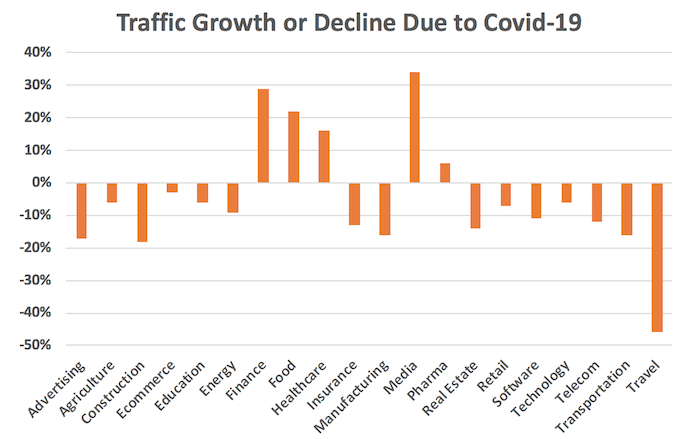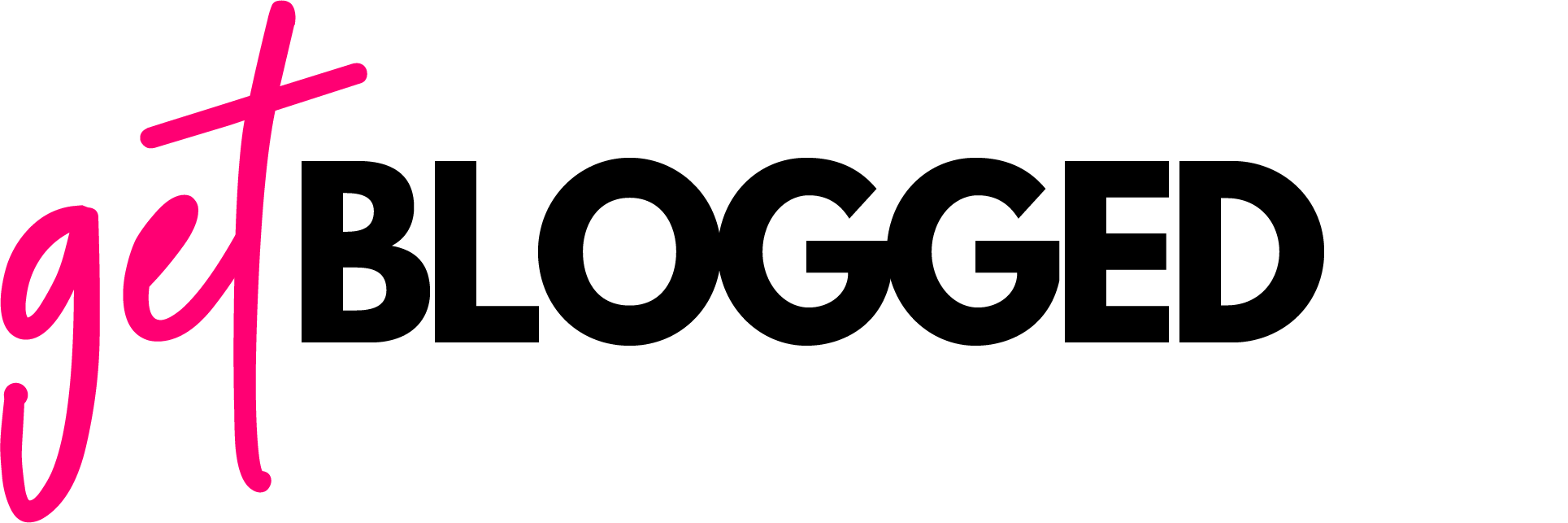Did the implications of the Coronavirus crisis wipe out a significant chunk of your blogging income?
Or did you start the year with wildly ambitious plans to scale your blog into a fully-fledged business with multiple income streams to give you the freedom and lifestyle that you really want, only to find that what’s happened over the past few months has left you feeling lost, confused, and not sure where to turn?
You’re not alone.
As bloggers and content creators tried to navigate their way through the pandemic, so many experienced big losses in earnings.
Others struggled to continue to publish content for the fear that the topics that they usually spoke so confidently about were just downright insensitive and tone deaf in the face of a global crisis.
And to add to this turmoil, for a while it seemed quite inappropriate to voice and discuss these concerns. Talking about how no one’s checking out your chicken salad recipe anymore, or how your latest brand collab has fallen through because that summer festival has been cancelled, seems vacuous at best when millions of people fear unemployment and for the health of their families.
But it’s important to recognise too that for many people, blogging is their livelihood. It’s how they put food on the table, and keep their kids in clothes.
So as lockdown restrictions start to ease, content creators have started to consider how they can recover their income losses and navigate their businesses through the new normal.
Today, we want to take a detailed look at how bloggers have been impacted by the crisis, and share practical strategies for increasing your income from this point forward…
Let’s take a step back and look at why many blogging incomes took a hit…
Before we get into ways that you can start recovering your blogging income, it’s important to examine the reasons why parts of the online publishing industry were hit in the way they were.
Plenty of people assumed that with more people being forced to stay at home, this would mean more traffic and more demand for online content.
Things weren’t quite so straightforward, though.
Bloggers with experience in the world of monetisation know that it’s always sensible to have multiple streams of income. Then if something goes wrong, as things inevitably sometimes do, you always have other sources of earnings to fall back on. But as we’re constantly reminded, these really are unprecedented times. For certain publishers, the pandemic had an impact of every area of their businesses.
First of all, many did in fact experience a big reduction in traffic. Exactly what this looked like for you would have largely been dependent on your niche. Unsurprisingly, the Evening Standard reported that Coronavirus restrictions had left travel bloggers struggling for readership, with one particular creator experiencing a nine-year low in traffic.
Writing at the start of the crisis, marketing pro Neil Patel published this graphic representation of traffic growth or decline due to Covid-19.

It’s sobering stuff.
Clearly, most industries and niches experienced a significant hit, and that inevitably had a knock-on effect.
Less traffic means less advertising revenue. It means less affiliate sales, and less direct sales of any digital or physical products or services that you might sell via your platform.
At a wider level, some advertisers decided to pull their marketing budgets whilst they weathered the storm, resulting in many creators being paid less for the traffic that they did still have. Some affiliate programmes slashed their commissions or pulled their programmes completely, and some brands will decided that it wasn’t the time to go ahead with paid collaborations.
This might sound like a whole load of negativity, and maybe you’re surprised that we’re being quite so blunt about the reality of what’s been going on here.
Because we’re Get Blogged, after all.
Our business is built around the online publishing industry, we’re bloggers ourselves, and we’re endlessly passionate and positive about what blogging can do for individuals and their contribution and difference they can make for the brands and businesses that they collaborate with.
But equally, we feel that right now it’s so important for us to be honest and frank about what you, as a blogger, may well have been experiencing lately.
One of our most important goals is to support content creators and help them to be the best they can possibly be. And so we want to recognise your recent struggles and help you to take control, recognise your options, and create a solid plan for navigating the next few months in a positive, productive, and profitable way.
So without any further ado, here are some ideas that you can start putting into action straightaway…
1. Take the time to redefine your voice and your role as a content creator, and give yourself permission to move forward
This might sound a bit airy-fairy at first glance, but bear with us, because it’s one of the most valuable things you can do in terms of getting that momentum back and adopting the kind of mindset you need to start building your blog again.
For reasons we’ve touched on, you might have recently felt like you just don’t know what to say to your audience.
The world still feels very sensitive right now, so it’s understandable if you’ve taken a bit of a step back from your usual publishing schedule.
But the reality of the situation is that you have a business to run, and you can do so whilst being valuable to your readers. The two aren’t mutually exclusive, even (and especially) during these times.
You can’t fix the wider problems that are hurting just about everyone in some shape or form right now, but what you can do is seek to find your role as a content creator during this season.
Value, and what that looks like for your readers, can take many different forms. It can be helping people to create a budget when they’ve just taken a big pay cut, it can be providing some light relief from the day to day grind, or it can be simply sharing your own experience and helping people to feel seen and heard.
The bottom line is that the show must go on. Give yourself permission to move forward, even if the path you take will have to look a little different.
With that out the way, let’s move on to more practical ideas and strategies…
2. Check in with the brands and PR contacts you’ve previously worked with
If you’ve worked with brands before then they’ll already know you and be familiar with the quality of your work.
Now could be a great time to reach back out to them, share an updated media kit and recent stats, and even present some ideas that you have around how you can support them further and help them to build more brand awareness and sales.
You never know what it might lead to, and often just the act of being proactive can really spur you on and get more ideas flowing.
Of course, sensitivity and a bit of good old fashioned common sense is key here.
Emailing that cocktail bar that you worked with last year which is now struggling to stay afloat is ill advised. But do remember that for the right businesses, you can offer real tangible value right now.
3. Actively pursue new brand partnerships
Much of the rhetoric in the blogosphere recently has been around the fact that lots of brands have chosen to knock their blogger and influencer collaborations on the head for the foreseeable future.
That’s true in some cases, but it’s certainly not the case right across the board.
Some brands are continuing their campaigns as normal, and plenty more are realising the power of online marketing and link building and just how important it could prove to be in the coming months and years.
Put simply, there’s still an abundance of opportunity for you to create new partnerships and get paid work.
This month alone, we’re set to list around £15,000 worth of opportunities on Get Blogged, and that’s without mentioning the Get Blogged Marketplace, where you can connect with brands and business owners who are actively seeking out bloggers and influencers just like you.
If you’ve let your pitching activities slide lately, now’s the time to get back on the horse. Commit to logging into Get Blogged regularly to check for new opportunities, get creative with your pitches, and show our brands exactly what you’re made of.
4. Do an audit of the skills you’ve developed as a blogger, and consider how to monetise them as a freelancer
Don’t overlook the fact that as an online publisher, you’ve no doubt added a boatload of skills to your repertoire.
Do you know how to create compelling content? Can you design eye-catching imagery? Do you know your way round the backend of WordPress?
For most bloggers, the answers to these questions is a big, firm yes.
So why not think about how you could start a side hustle by offering these services on a freelance basis?
You may already have contacts in mind who you could pitch such services to, but if not, look towards established marketplace platforms like PeoplePerHour and Upwork.
The beauty of freelancing is similar to that of blogging. You choose your hours, you choose your work, and you’re in control.
This can make it a wonderfully flexible sideline to running your own website, giving you the power to boost your earnings when you need to without being tied into long-term commitments.
5. Optimise your display ads for maximum profits
The money that you earn from running display ads on your blog, via networks such as Google AdSense and Mediavine, is directly proportional to how much traffic you get.
The more visitors you receive, the more times your adverts are seen, and therefore the more you earn.
There are also other factors at play though that you can tap into to increase your advertising earnings without increasing your traffic.
If you’re using Google AdSense, check out these 11 proven strategies to increase your AdSense revenue.
If you’re with Mediavine, you’ll be pleased to know that there’s a ton of support available to you to boost your ad revenue.
Their system works on an RPM basis, which means the earnings accrued for every 1,000 visitors.
In theory, you could double your advertising earnings with no extra traffic, by doubling your RPM. That’s a fairly simplistic way to look at things, but the key takeaway is that it makes sense to understand RPM and how to improve it. Some small changes now could increase your earnings for a long time into the future.
For more details, read their 25 ways to improve RPM. You can also reach out to their support team for more tailored advice based on your own Mediavine-approved blog.
AdSense and Mediavine are two of the most popular ad network choices for bloggers and content creators, but there are many others out there with their own guides to increasing revenue.
Of course, user experience is a valid concern when you’re optimising your ads. No blogger who takes pride in their work wants their website chockablock with ads to the extent that it drives away their loyal readers. But there’s a middle ground, and it’s one that you can likely find with a little bit of trial and error, and experimentation.
6. Ditch those subscriptions that you’re not using anymore
There are countless different investments that you can make to help you to grow your blogging business. Just a few examples include hosting, premium WordPress plugins, email marketing software, SEO tools, and graphic design platforms.
Some prove to be worth their weight in gold, but inevitably, there are ones you sign up to that you realise you really don’t need.
Today (really, today, or you’ll just forget about it!), take a look through every single monthly payment that you’re making for blogging related tools.
Ask yourself for each one, ‘do I really need this?’.
If you don’t, cancel it straightaway.
If it is something that you do really need, then consider whether you could downgrade it. You might be paying for a service level that you don’t need, and you could drop down to a lower tier and pay a smaller monthly fee.
Similarly, maybe you signed up for a certain service provider when there were no other alternatives out there, but that’s since changed. Now could be the time to switch to a competitor if you could get a better deal.
And finally, if it’s something you need and you’re paying for the level that you need, look into whether you could shift to an annual payment instead of a monthly one.
Many software and tools providers will give you a discount of up to around 20% if you decide to pay annually, and this could be a good way to make a significant saving in the longer term.
Saving money might not be quite as exciting as making money, and these kind of tasks can seem tedious, but at the end of the day, what matters most to a business is profit. Slashing some of your expenses could make a significant difference to the amount of cash you take home at the end of the month.
7. Boost your profile and authority by getting your blog in the press
The press is still dominated by Coronavirus, but there are plenty of journalists and editors out there who are looking to create pieces on hobbies, opinions, and stay-at-home lifestyle to provide some light relief for their audience.
Stop to think about the kind of subjects that are trending right now, and identify where you could offer an interesting angle, advice, or expertise.
A beauty blogger may be in a strong position to show people how to do a DIY haircut, a gardening blogger might be able to explain how to start a vegetable patch on a small balcony, or if you were already a homeschooler before the schools closed their doors, you might be able to share some of your best tips for keeping kids happy and fulfilled at home.
Consider the kind of publications that your expertise could be the best fit for and get pitching. Reach out the appropriate journalist and tell them why their readers need to see it.
Sometimes you’ll receive payment for this kind of work, though not always. But it can help you to attract new readers who’ll love your content, and some media mentions can really build up your credibility and open doors in the future. You’ll also sometimes get a backlink from a big news site, which could do wonders for your SEO efforts.
If you want to explore this further, it’s worth checking out HARO. It’s a free platform that lets you connect with journalists looking for specific stories and case studies for their work.
8. Update and improve your old content
Constantly generating new content ideas and creating new posts can sometimes be exhausting, even for the most experienced and passionate bloggers.
But equally, it’s not always entirely necessary.
Think back to some of the posts that you’ve created in the past. Since then you’ve no doubt learned much more about what classes as great content, how to optimise it for SEO, how to create pinnable images and clickable titles, and so on.
So instead of getting new content out, go back and improve your previous posts.
You might want to include more detail, answer questions that you’ve since realised you’d overlooked, add more relevant and up to date information, or improve your images so they’re more in line with your brand.
It’s also a very good idea to carry out an SEO audit on your older content, and improve the chances of it ranking well in the future. Have you got the Yoast plugin installed, and are you hitting green on their traffic light system? Are you following internal linking best practices? Are you targeting the right keywords to give you the best chances of ranking, or do you need to make some tweaks?
Looking at the answers to these questions will help you to get more mileage and profitability out of your existing content in the future.
9. Launch your own digital product
Creating your own digital product can feel like a mammoth task for lots of bloggers, and there’s no denying that there’s a learning curve in terms of crafting an offering that your audience will love, marketing it effectively, and ensuring that your tech set-up runs smoothly without any glitches.
But creating a product can be simpler than you might think.
It also gives you the opportunity to serve your readers at a deeper level, and add an additional income stream to your blogging business.
There are so many different options to consider, but in practical terms, some examples of paid-for digital products include:
- Planners and workbooks
- Printable art
- E-books
- Pre-recorded audio and video courses
- Live webinar classes
- Cheat sheets and swipe files
- Stock photography
It’s true that many people are struggling financially at present and not everyone will be in a position to buy.
But if you’ve been blogging a while then it’s likely that you’ll already have tons of content available to those people for free. Some of your audience will have money available though and will be happy to spend it on something that can be genuinely useful to them.
10. Start building your email list (or if you already have one, ask yourself if you’re using it effectively)
Content creators are well aware of the value of platforms like Facebook, Twitter, and Instagram when it comes to building a brand, cultivating an engaged audience, and driving traffic.
But being entirely at the mercy of these platforms is never wise. They could disappear overnight (okay, it’s not likely but it’s not completely out of the realms of possibility), or they could change their algorithms and make it next to impossible for you to reach and connect with your readers.
As such, it’s always a good idea to build a list of email subscribers and send out regular email updates. This can be a brilliant way to drive traffic, to create stronger relationships with your readers, and it’s also an asset that you can directly monetise through sponsored email content partnerships.
If this is something that you know you’ve neglected so far, it could be time to address this fact.
For starters, you’ll need to sign up for an email marketing software provider, create a compelling opt-in incentive freebie such as a free e-book or printable resource, and put together an autoresponder series of emails that go out to your subscribers when they first sign up.
If you already have a list? Think about how you can optimise your processes to make them work better for you. Consider how you could improve your open rates, or the conversion rate on your landing pages, or ensure your autoresponder series is the best it could possibly be, or how you can increase the profitability of your list.
Work like this will often have a long-term positive impact for your blog, and is another asset that you can add to your business .
11. Create a new pipeline of traffic
When we discover something that works, it makes sense to stick with it. So if you’ve found and honed a strategy that sends consistent traffic to your site, you might have gotten a bit too comfortable.
Algorithms can change overnight and it’s not unheard of for publishers to lose a large chunk of their visitors purely because Google or Pinterest changed something behind the scenes.
You can take steps to future proof your income sources by making sure that you don’t have all your eggs in one basket.
You might decide that it’s time to start taking SEO extra seriously, or maybe you’ll take a course showing you how to drive large amounts of visitors via Pinterest.
12. Take care of broken links
You can file this one under ‘things that bloggers know they need to do but never quite get round to’.
Not quite sure what we’re talking on? Let’s explain…
Website owners will often link to external content resources to make their work as useful as possible for readers. Over time, these external websites could cease to exist, and so your site is left with what’s known as ‘broken links’.
These are problematic because it signals to search engines that your content is not as good as it could be, and this could be a factor in your site not achieving the search engine rankings that it could be. That leads to less traffic, which will often lead to less income.
Broken links also create a poorer experience for your readers, so you should take the time regularly to pinpoint and remove any that might exist on your site.
For the lowdown on what to do, read this guide to automatically fixing broken links in WordPress with a plugin.
This is the kind of task that might not see instant results, but it’s a best practice that should definitely be built into your regularly processes, and over time it could prove to have a real impact on traffic and earnings.
13. Improve your site speed
Site speed is another factor that Google has indicated is a factor when it comes to your search engine rankings.
In the most basic of terms, if your site takes too long to load, Google recognises that that doesn’t provide the best possible experience for its users, and so it’s less likely to reward you with good rankings.
To learn more about this and how to improve your site in this respect, read Lyrical Host’s bloggers’ guide to WordPress speed optimisation.
14. Reassess your affiliate strategy
Consumer behaviour and buying habits changed as the country went into lockdown, and it remains to be seen just how deep and long-lasting these changes will be.
But it may be the case that your previous affiliate strategy needs tweaking as you move forward.
Consider how you could champion the businesses that have really stepped up to the plate over the past few months, that you can’t stop raving about and that you know have something that would be of real interest and value to your readers.
Perhaps, for example, you’ve been ordering from a recipe delivery box company. It’s kept you away from the stress of the supermarket, it’s reignited your love of cooking, and it’s ensured that your family is happy and healthy.
If they have an affiliate programme then you could create content around unboxing your weekly delivery and showing the quality of what you get, record yourself making the meals, or discuss why you feel the brand is doing such a good job and how they’re keeping staff and customers safe whilst delivering a vital service.
What this looks like in practice will vary greatly depending on your niche, but it’s definitely worth doing some brainstorming.
Some final thoughts on blogging in the post-lockdown world
No one knows for sure what exact challenges we’ll face over the coming months, and it’s true that for many bloggers, there’ll be plans that need to be scrapped and ideas that need to be put on the back burner.
But at the same time, new opportunities to serve and connect with readers whilst also strengthening our businesses will present themselves. Being open to news ways of working and thriving will undoubtedly be key to coming out the other side as a better blogger.
These ideas that we’ve walked through here are a great starting point. Are they any additional options that you’d add to the list? Leave a comment and let us know. We’d love to hear your thoughts.
Want to save this post so you can come back to it later? Pin the image below on Pinterest.



 rated
rated







![6 ways to collaborate with bloggers this Thanksgiving [with case studies]](https://getblogged.net/wp-content/uploads/2022/10/pexels-rodion-kutsaiev-10060431-300x300.jpg)


![Blogger's guide to seasonal gift guides [+ 20 ideas to steal]](https://getblogged.net/wp-content/uploads/2022/09/pexels-ray-piedra-1502219-300x200.jpg)







